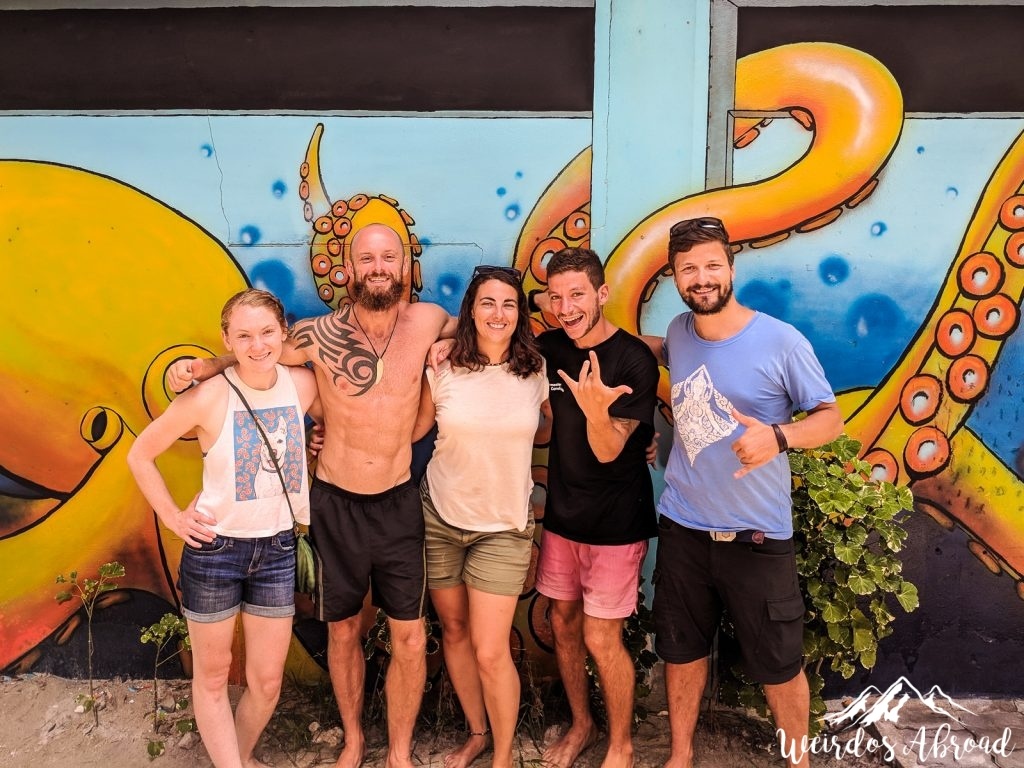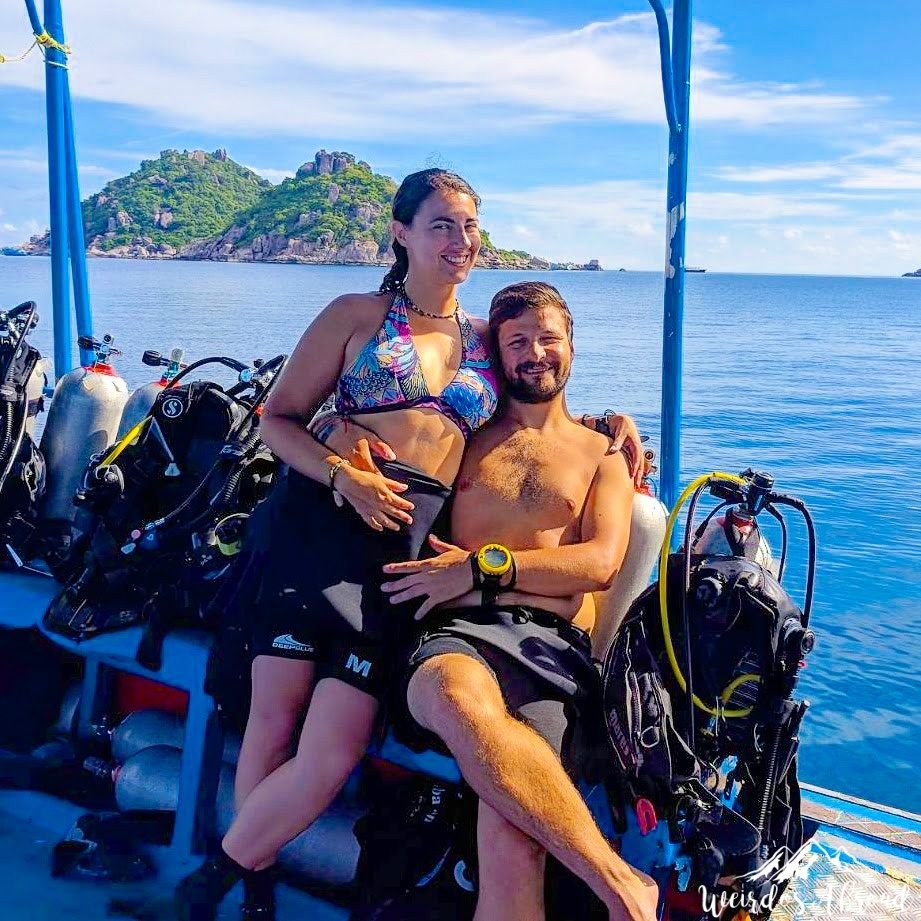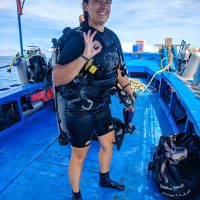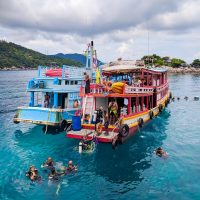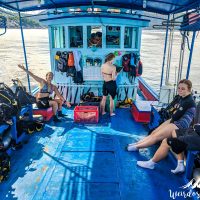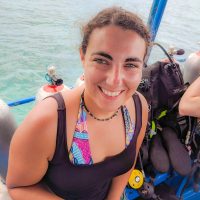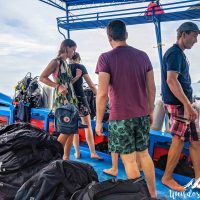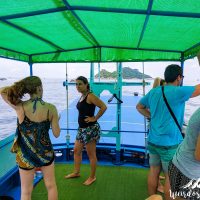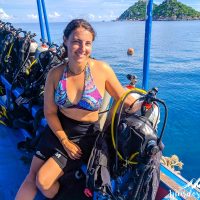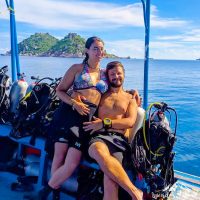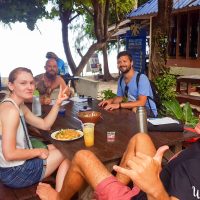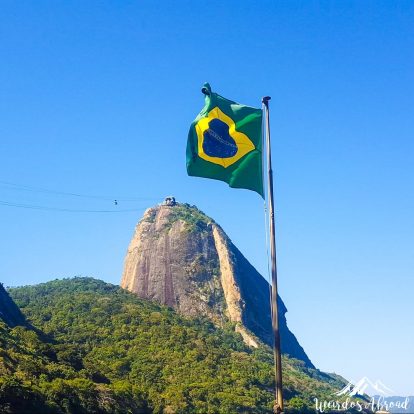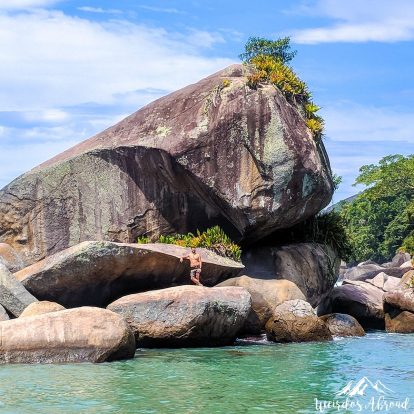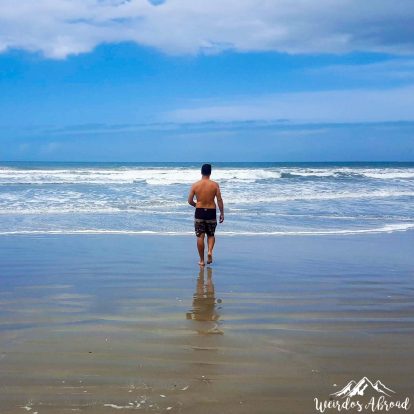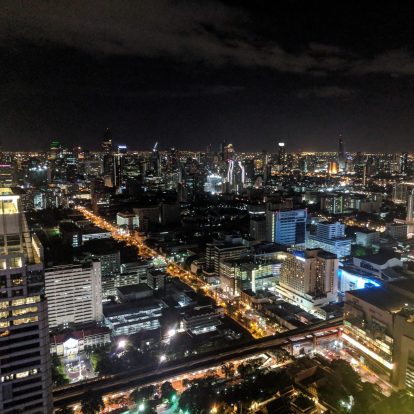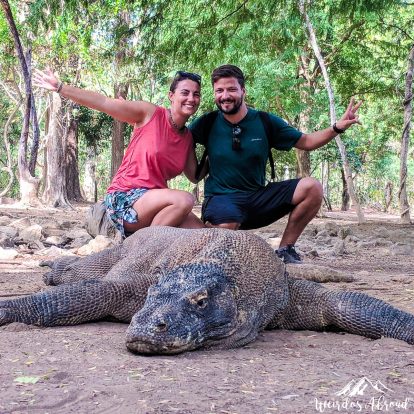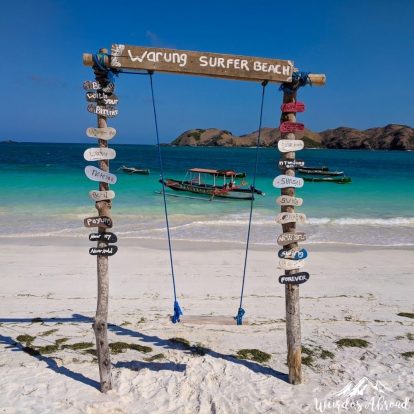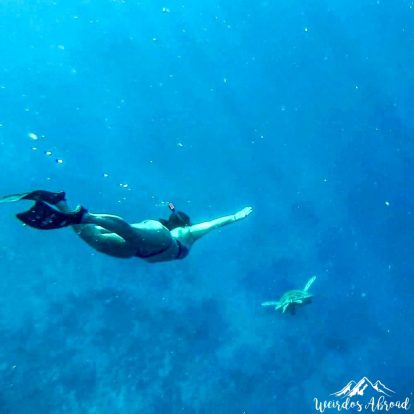Scuba Diving in Koh Tao
How to choose your diving club
I our previous article about Koh Tao island we talked about the beauty of the island. Next, we will discuss about the beauty of diving near the island. Koh Tao is full of diving clubs so finding one is not the problem, but choosing the right one might be trickier.
On our side, as we knew we wanted to come to Koh Tao to try pass our PADI license so we did some research online ahead of time. We decided to go with Scuba Junction that was highly recommended on several websites we scrolled through. I’ll talk more about them below.
If you have not planned ahead, no worries. One of the option is to spend some time walking around the clubs that are all aligned by the beach and ask them your questions. What to look for will depend on your time: looking to pass a certification, having a discovering scuba day (DSD) or looking for some fun dives. For the last one in particular you might want to ask the program of the next days and choose according to the sites you are interested in exploring. For all, security and safety should be your first criteria. Look for the number of instructors and/or divemasters per diver (1 instructor to 4 divers should be maximum), the kind of material used but also follow your feeling after talking with the staff.
What is so special about diving there?
Koh Tao offers about 20 diving sites; it might not be much, but some of them are part of the best diving sites in the world.
If you are lucky you will get to see some amazing aquatic life, including whale sharks, turtles, manta rays, barracudas… as well as a crazy amount of different fishes! Not even mentioning the beautiful coral life.
Some of the best spots are actually “rocks” around which aquatic life abounds; that includes Green Rock, White Rock and Red Rock (if you recognized the Italian flag it is not a coincidence: they were discovered by an Italian diver who therefore got the privilege to name those sites), also Sail Rock further away, not forgetting Twins (2 rocks) and Shark Island (no sharks around but a rock shaped as a shark fin, as seen from the surface).
The Japanese Garden and Twins diving sites bear a special place in our heart as not only they are beautiful but this is where we did our first dives…
Finally, Koh Tao offers a great wreck to explore as a fun dive in Hin Pee Wee: the ship wreck, called HTMS Sattakut is a former military ship, 49 meters long, that was intentionally sunk there in 2011. At a depth between 24 and 29 meters, it offers a great show with a completely different aquatic life comprised of huge fishes such as barracudas and groupers, as well as impressive fish schools.
Scuba Junction Diving Club
As I said, we had booked with Scuba Junction our PADI (Open Water Course) license quite a few months ahead. Reading from the recommendations, we were set that this was the place where we wanted to learn scuba diving.
One of the argument that convince us is the fact that the group was guaranteed to be limited to 4 persons. First bad surprise: our group will be 5 persons. Not the diving club’s fault as one of the participant that booked in advance “forgot” to mention (and to pay the related deposit) that his girlfriend would participate too. However the positive part is that instead of having one instructor for our group of 4, we dived with 2 instructors for a group of 5… and this was even better! Our instructors, Rich (who is also the manager) and Fish, were amazing! Both were very competent as instructors, being always strict but encouraging, serious but fun and friendly.
Do we recommend Scuba Junction?
Definitely yes. This place is a bit more expensive than other clubs around but we felt very good and safe. Also, we improved very fast thanks to the advices and attention of our instructors with help of the dive masters of the club. The local staff was also very helpful (with a special thumbs up :+1: for the boat crew) by always having an eye on us to double-check that we didn’t forget anything, helping us to get ready to jump in the water and to get back on the boat.
We liked it so much that we changed our plans to stay a few more days and pass our Advanced Open Water certification! Completely out of our budget but such and amazing time diving with this team!
PADI - Open Water Course
How long and how much?
The Open Water Course at Scuba Junction is taking place over 3,5 days: 1 day for academic learning (video and writing test) and 2.5 days for diving. You will therefore do 6 dives, although the 2 first ones do not count as actual dives as you stay in shallower water. The deepest you will get throughout the course is 18m.
It costs 10,000 THB (300 USD) at the time of writing, which is slightly in the upper range of the prices you can find on Koh Tao but it still remains one of the cheapest place in the world!
That price includes your instructor (1 for a maximum of 4 people), the complete set of diving gear and the boat rides to the dive sites. If you are lucky, even some fruits 🙂 .
Academic learning
This part is relatively straightforward. You will watch a series of DVD going through the knowledge you should absorb and answer a quiz in the meantime that you will get to correct altogether. Each video is about 30 minutes. If you still feel uncomfortable about a specific part you can look in the PADI manual that will be lended to you and/or ask your instructor. Don’t panic if some parts still blurry, you will have time to practice under water. What matters here is to understand the major concepts.
After viewing all the videos you will have to answer a final test (still a quiz). Normally you should not have any major issues for the final test as you should have clarified most of the matters with your instructor beforehand.
PADI confined water tests
Time to put on your diving gears and give it a try!
We were offered the choice between doing those exercises in a swimming pool or in shallow water. We all agreed to try directly in the ocean and we didn’t regret it! First, because we felt that by learning the skills directly in the ocean we would feel more comfortable to dive deeper rather than having to adapt to the transition between swimming pool and ocean. Second, because it was already so beautiful to be there, see all those fishes around that were coming to tickle our feet or feed themselves from the sand we would move around!
Below is a list of skills that we had to go through:
- Swimming: before we were even allowed to dive we had to prove we could actually swim, therefore we had first to stay afloat for 10 minutes in the water and then to swim 200 m.
- Getting ready: assembling your own diving gear, pre-dive safety check with your buddy, learning the different ways to get in the water
- Snorkeling: the PADI course actually includes snorkeling skills such as clearing your snorkel, diving and resurfacing, going from your regulator to your snorkel and reverse with your face underwater
- Buddy support at surface: tired diver tow and cramps release
- Descending: safely getting underwater (SORTED)
- Air related skills: being able to recover your regulator underwater, to use your buddy alternate air source and to breath from a free-flowing regulator
- Mask related skills: clearing a partially and fully flooded water from your mask underwater, removing and putting back your mask, removing and swimming without your mask
- Buoyancy related skills: inflating and deflating your BCD, floating in a buddha position, hovering, BCD oral inflation at surface and at depth
- Equipment related skills: disconnect and reconnect the low pressure inflator at surface and at depth, remove and put back BCD and weight belts at surface and at depth, re-adjust buddy equipment such as tank
- Hand signal skills: signal OK after getting in the water, answer your instructors, use your SPG and signal your remaining air
- After dive: getting back on the boat, disassembling your material and cleaning it.
It is a lot to cover and it is split between 2 dives but one skill after the other we were surprised to see how much we could actually do and manage! Of course we didn’t get all the skills right on the first time but it is OK, you just need to relax, breathe, focus and try again (but really most of them you do get them right straight away). The good part of being with a group is that you can actually see the others doing it and notice what is right or wrong and also observe the instructors correction.
PADI open water tests
Made it so far? Time to actually dive!
You need to make 4 dives to validate your Open Water certification. Usually the skills you did in confined water will be repeated across the 2 to 3 first dives. In addition you will need to:
- Ascend while equalising
- Use inflatable signalling device
- Practise a controlled emergency swimming ascent (CESA)
- Ascend making a safety stop at 5 meters
- Orientate yourself with a compass (basic navigation)
If your group managed to cover all the skills within the first dive, usually the last dive is more of a fun dive!
PADI - Advanced Open Water Course
We loved our PADI experience, team and instructors so much that the 5 of us decided to change our schedule and register for the Advanced Open Water Course (AOW)! Although the OW allows you to do about 25% of all fun dives, the AOW give you access to most of the fun dive sites. But honestly, the main reason we decided to do it is to continue improving and be safe when we dive on our own!
How long and how much?
The Advanced Open Water course lasts 2 days and includes a study-yourself academic part, followed by 5 dives. Those 5 dives are meant to introduce you to some PADI specialties: Peak Buoyancy Performance, Navigation, Night Dive, Deep Dive and Wreck Dive.
The price was the same than the PADI OW, although, we got a discount for continuing in the same club.
Buoyancy Peak Performance
This dive is a circus show! Really!
The purpose of this skill is to improve your buoyancy by learning how to control the air in your BCD properly, by maintaining the right position underwater, by kicking your fins correctly but more importantly by controlling your breathing.
Got it? Let the show begins! We had to slalom through squares, swim upside down through tunnels, make a loop around circles, nose-kiss a stick planted in the sand, etc… while maintaining your hands across your body (you should not use your hands to swim while scuba diving). It was both fun and challenging! Even more fun was that Silviu managed to deplete his air tank in a record time. He actually had to surface before everyone else due to this.
Navigation
The concept is simple: we all have our compass, they show us the direction towards which we will swim, we follow them, trying to remember our depth and the landscapes. Then we stop on a sand patch underwater, do some navigation exercise (swim in square, calculate your kick speed…). Finally, we are separated by teams of two and we have to find our way back to the boat! It seems easy but it really is not! But of course the wonderful team Weirdos Abroad made it!! Team Perine and Silviu managed to find the boat even in low visibility, ascend on the line, make the 5 meter safety stop and pass the test.
Night Dive
This was more of a fun dive but still required some preparation. Indeed for this dive you hold a light in your hand and you need to be even more careful to your environment when descending and ascending but also when swimming as to not loose one another! You also need to learn how to communicate differently with a flashlight in your hand, as you don’t want to blind your buddy with your flashlight!
Apart from that, I have to admit that the night dive was much funnier than I would have expected! It’s weird to suddenly catch sight of a fish appearing in your luminous beam! We also got to discover or re-discover the aquatic life as it is quite different from day to night! Silviu and I also got the chance to spot 3 beautiful manta rays, as well as a big barracuda!
Unfortunately, during the course, for obvious safety reasons, we are not allowed to carry any photographic equipment with us.
Deep Dive
The next day at 6h30 we are back on the boat for our deep dive: down to 30 meters! The 4 main differences from our previous dives are:
- the visibility decreases a lot when you get deeper
- you consume your air faster the deeper you get
- you need to respect what is called a “no-decompression” time indicated by your dive computer and the safety stop at 5m becomes mandatory
- after 22 m or so one can suffer of gas narcosis that can have a debilitating or exhilarating effect on the diver
To be honest it went very smoothly for us. With one exception, of course: Silviu’s air consumption! We noticed during the previous dive that Silviu somehow consumes air faster, probably because he is a mountaineer (?). Luckily for him, his great buddy (me!) tends to consumes air slower, at least he could count on my alternate air if ever needed (hopefully never as it would mean he ran out of air!!). Anyway, because deep dives means air consumption increases, we anticipated by giving him a bigger tank (15L instead or 10L)… but guess what? He STILL was the first one to reach the turning point limit!! Even our instructor couldn’t believe it!
Concretely, it just meant that he had to resurface a few minutes before us… Duh!
Wreck Dive
I talked previously about the ship wreck HTMS Sattakut. Diving there had been a fun experience for us. Also a good way to test our Buoyancy control!
The aquatic life around a wreck is completely different and it was great to be able to experience it! It was a privilege to be surrounded by so many fishes, of different sizes and colors. Splendid!
Our experience
Honestly we were both pretty nervous before our first dives (yes in plural). We both wanted to experience scuba diving but we were really not sure if we would like it, or even just manage to breathe under water! But as I said, our instructors were great and one skill after the other we actually impressed ourselves (yes we are modest) because we were able to do things we did not believe we could do a few days (even minutes) before!
Silviu had problems removing his mask and breathing only through his mouth. The problem was that he would inhale water through his nose. After a few practice runs, and a lot of water swallowed, he managed to do this flawlessly at the bottom of the ocean. A bit of exercise is required, and the results come one after another.
The more you dive, the more confident you get as to breathe better and in a more calmly manner. This part was the one we were the most scared of (not easy to resurface when you are 18 m under water!) but we realized that it was also the most important: breathing properly underwater impact everything you do including how you move!
Seeing yourself improving hours after hours, and building safe reflexes is an extraordinary feeling! Being able to dive more naturally allowed us to enjoy even more the incredible aquatic show around us!
The buddy system was also great for us; indeed you must dive with a buddy and you must continuously check on each other. Having each other as a buddy was great, as we were both happy and supportive for each other while relying on our mutual trust. Also, sharing this incredible experience with your partner is amazing!
